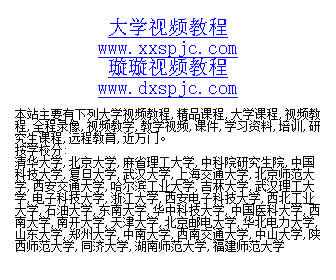![《新编剑桥世界近代史》(The New Cambridge Modern History)[PDF]](http://pic.dxspjc.com/dx_pic/9090309/5140411.jpg)
论述自欧洲文艺复兴至第二次世界大战结束,即1493年至1945年的世界历史。全书由英语国家著名学者分别执笔,以地区史、国别史和专题史的体裁交错论述,代表了西方史学的较高水平。本书自20世纪50年代问世,至90年代多次重印,堪称一部世纪史巨著。
包 括:《文艺复兴(1493-1520)》、《宗教改革(1520-1589)》、《反宗教改革运动和价格革命(1589-1610)》、《旧制度 (1713-1763)》、《美国和法国革命(1763-1793)》、《动乱年代的战争与和平(1793-1830)》、《欧洲势力的顶峰 (1830-1870)》、《物质进步与世界范围的问题(1870-1898)》、《世界力量对比的变化(1898-1945)》等。
有上百年编辑出版史 书传统的英国剑桥大学出版社20世纪初出版了有广泛影响的世界通史。这套通史分为古代史、中世纪史和近代史三部。其中的近代史描述文艺复兴以后的世界,由 阿克顿勋爵主编,共14卷。书出版几十年后,世界学术界在对这四百多年历史的研究中发现了许多新的材料,有了许多新的研究成果,于是剑桥大学出版社又组织 各国着名学者分别执笔重写近代史,其成果便是50年代开始出版的《新编剑桥世界近代史》,新编本由克拉克爵士主编,仍为14卷,估计约800万汉字,论述 自文艺复兴到第二次世界大战结束,即自1493至1945年间的世界历史。新编本代表了西方史学较新的学术成果和较高的学术水平。
按照剑 桥通史的一般写法,《新编剑桥世界近代史》也是国别史(如1917-1937年的苏联),地区史(如1900-1931年的中国、日本和太平洋),专题史 (如第二次世界大战)交错论述,既能看到各国各地区一定历史时期的概貌,也能读到引人入胜的历史事件。这套书的每一卷都是按年代顺序叙述一个大致的时期, 但时间的划分并不是硬性的,因为每一卷都要自成一个整体,每个主题都要有始有终。在所有各卷中,各章不是按年代而是按主题来划分的,在每一章里,由执笔人 决定是采用编年体还是综述,或两者兼用。
历史学家的社会职能过去一向是、而且今后也永远是随着千变万化的社会情况而发生变化。《新编剑桥 世界近代史》的编着者也不例外。当年阿克顿勋爵主编近代史时,曾要求执笔者尽可能以相同的历史观撰写各卷各章,而新编本各章的撰稿人和各卷的编辑不是根据 详细的编写计划,而是根据他们一致同意的指导原则来执笔的,他们代表着许多研究专业和许多思想流派,他们可以在自己编写的部分表述各自不同的思想,这是新 编本与阿克顿本的重要不同,正如意大利哲学家和史学家克罗齐所言:“一切真实历史就观念上讲是当代史。”
《新编剑桥世界近代史》14卷 中,前12卷为正文,第13卷是补编、第14卷为地图集。中国社会科学出版社1987年开始出版这套书的中译本,由中国社会科学院世界历史研究所组译,现 已出版八卷,即:第1卷“文艺复兴”(1493-1520)、第3卷“反宗教改革运动和价格革命”(1559-1610)、第7卷“旧制度” (1713-1763)、第8卷“美国革命和法国革命”(1763-1793)、第9卷“动乱年代的战争与和平”(1793-1830)、第10卷“欧洲 势力的顶峰”(1830-1870)、第11卷“物质进步与世界范围的问题”(1870-1898)和第12卷“世界力量对比的变化” (1898-1945),其余各卷将陆续出版。
第14卷地图册没找到,不知道出版没有,我有老版本:“The Cambridge Modern History”的14卷,过一段时间,另发一贴,把老版本的1—14卷发出来。估计历史地图册这种东西变化不会很大。
目录:
只在网上找到第2卷的目录,估计都没多少人看,但是没目录就无法成为精华资源,没得法啊!
This is the second, amended and enlarged edition of a familiar standard work, first published in 1958. Like its predecessor, it describes the open conflicts of the Reformation from Luther’s first challenge to the uneasy peace of the 1560’s. Reforming movements in all the principal countries are discussed, against the background of constitutional development and the political struggles of the ruling dynasties. Europe’s relations with the outside world are given due prominence. The second edition incorporates the results of some thirty years of further research and fills some of the gaps, especially in the history of central Europe, which beset the first edition. All chapters which remain from 1958 have been revised, some very substantially.
Contents
Introduction to the second edition;
1. The age of the reformation;
2. Economic change;
3. The reformation movements in Germany;
4. The reformation in Zurich, Strassburg and Geneva;
5. The anabaptists and the sects;
6. The reformation in Scandinavia and the Baltic;
7. Politics and the institutionalism of reform in Germany;
8. Poland, Bohemia and Hungary;
9. The reformation in France, 1515–1559;
10. The reformation in England;
11. Italy and the papacy;
12. The new orders;
13. The empire of Charles V in Europe;
14. The Habsburg–Valois wars;
15. Intellectual tendencies;
16. Schools and universities;
17. Constitutional development and political thought in western Europe;
18. Constitutional development and political thought in the Holy Roman Empire;
19. Constitutional development and political thought in eastern Europe;
20. Armies, navies and the art of war;
21. The Ottoman empire, 1520–1566;
22. Russia, 1462–1584; 23. The new world, 1521–1580;
24. Europe and the east;
Index.

